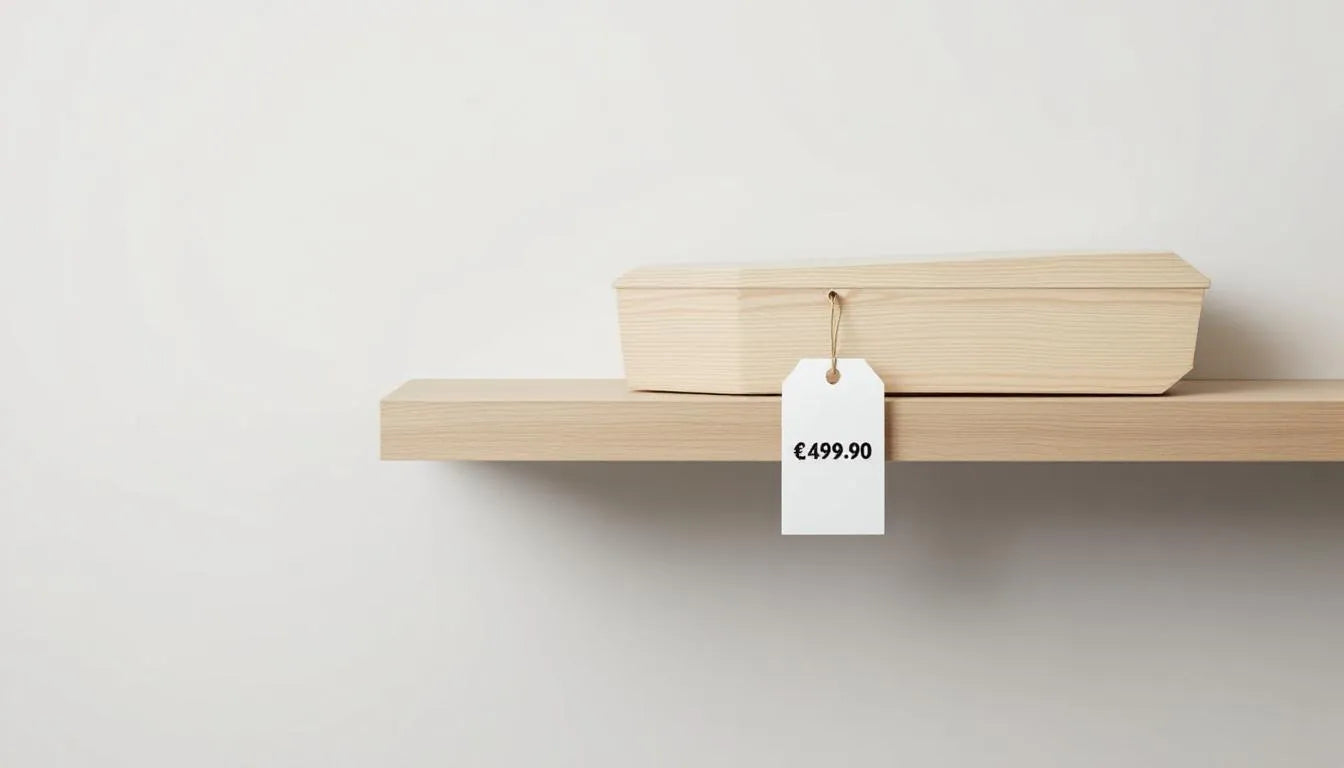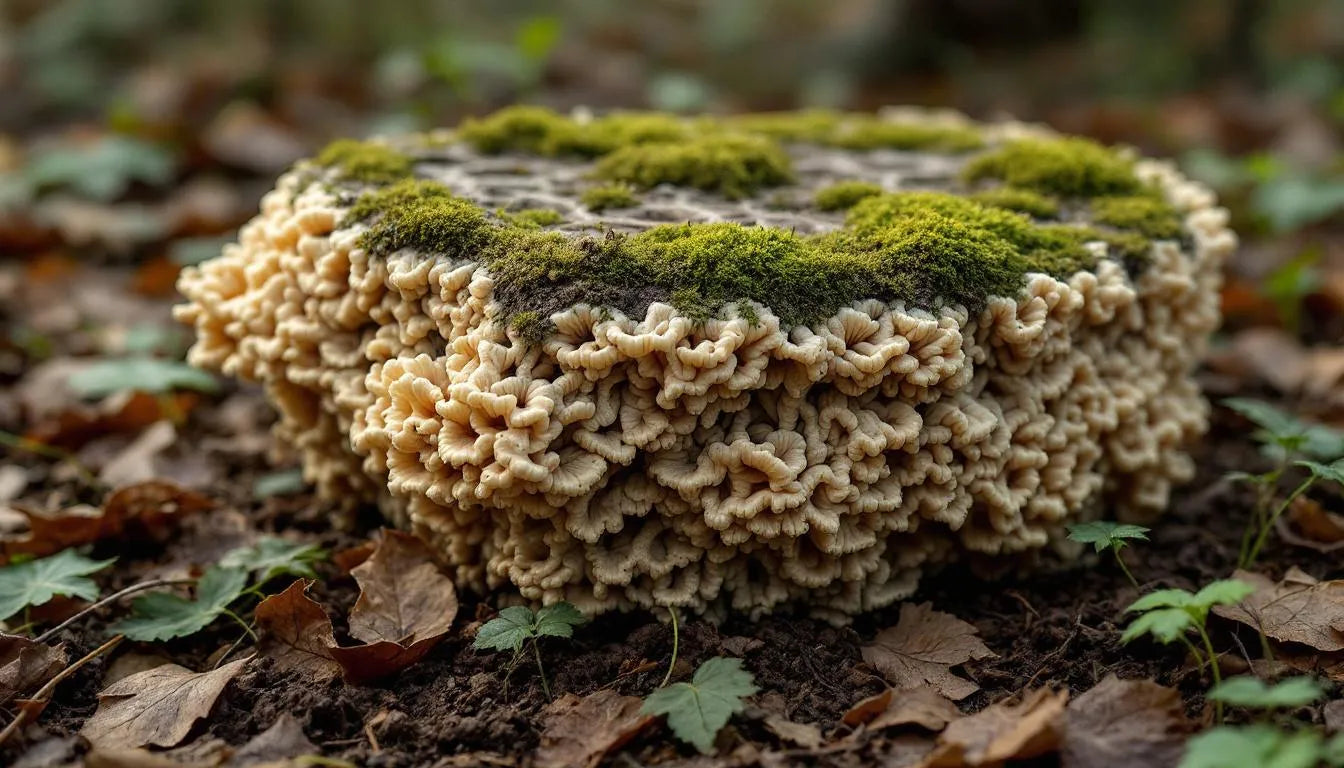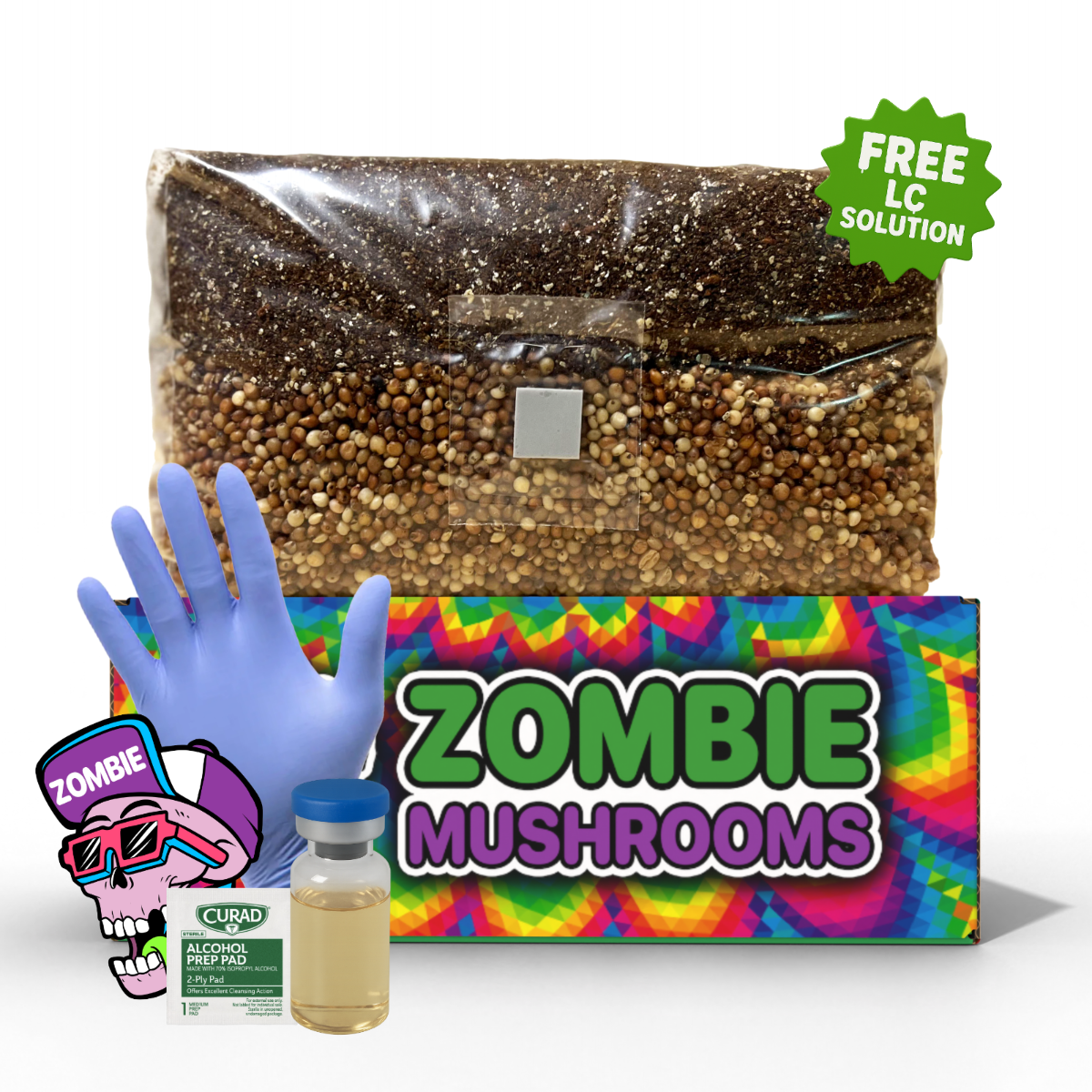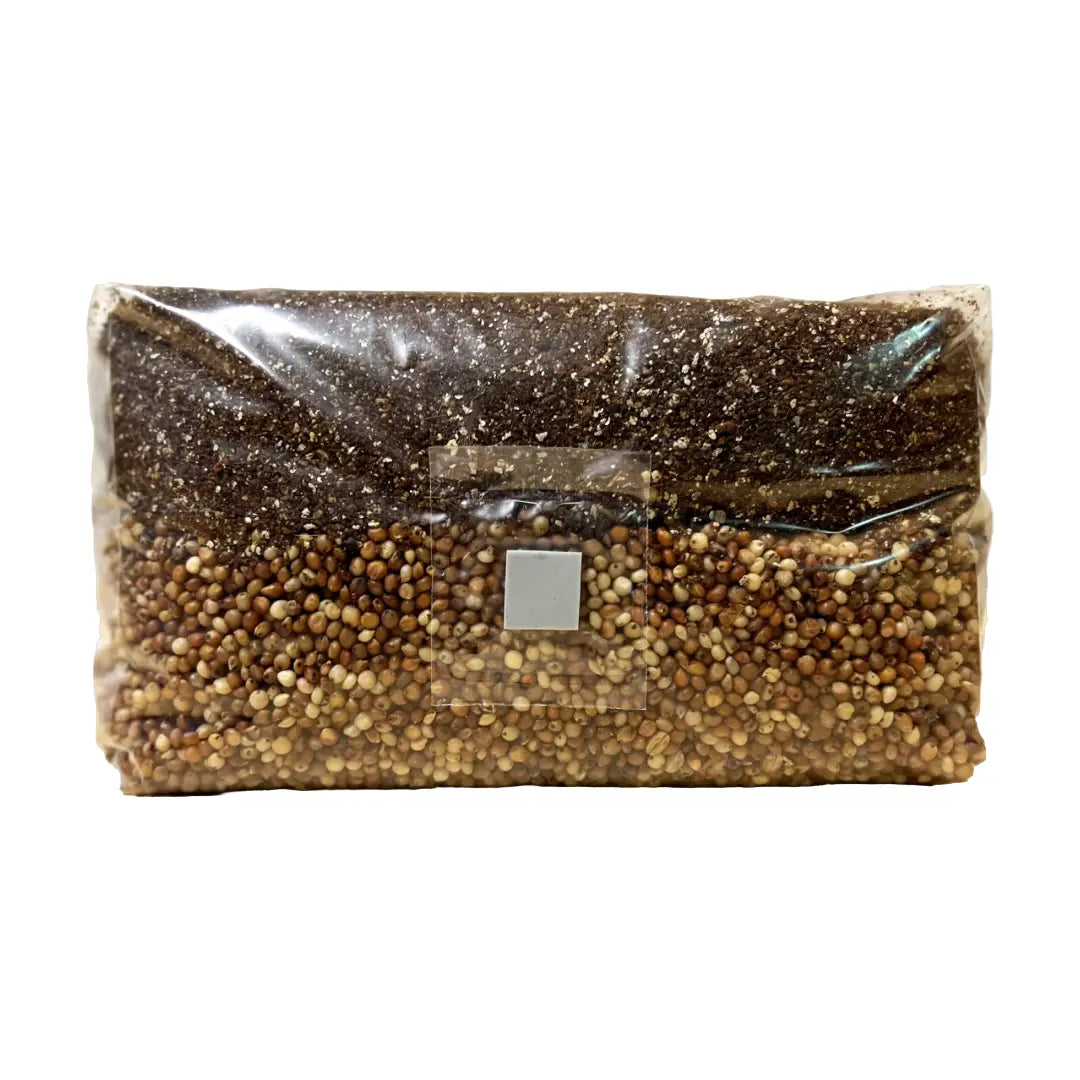⬇️ Prefer to listen instead? ⬇️

- ☠️ Traditional burials in the U.S. use over 4.3 million gallons of embalming fluid annually.
- 🌱 Mycelium coffins decompose in 30-45 days, compared to years for wooden or metal coffins.
- 🍄 Fungi can remove toxins through bioremediation, cleansing contaminated burial sites naturally.
- 🇳🇱 The Loop Living Cocoon, developed in the Netherlands, was the first commercially viable mushroom coffin.
- 🔄 Green burials promote a full ecological cycle, returning the body to the soil as rich, life-supporting compost.
More and more people are changing how they think about dying. They are choosing ways that help the planet instead of harming it. Traditional burials and cremations hurt the environment. This has led to more green burials. Green burials focus on being good for the environment. At the center of this is the mycelium coffin, also called a mushroom coffin. This coffin is made from earth materials. It helps bodies return to the soil quickly, in just weeks, an approach that mirrors the natural recycling power seen when mushrooms are cultivated in grain spawn bags.
What Is a Mycelium Coffin?
A mycelium coffin is a biodegradable burial container made from the root structure of fungi, known as mycelium. Mycelium is the dense, thread-like network of fungal cells that thrives underground and plays a vital role in breaking down organic matter in natural ecosystems. When used to create coffins, mycelium is combined with agricultural by-products such as hemp or straw and grown into a mold over several days to form the coffin structure. Once dried, this material becomes stable enough for burial, and once buried, it resumes its natural job: decomposition.
Unlike traditional coffins made of metal, hardwood, or plastic that take many years to break down, mycelium coffins break down completely within 30 to 45 days. When they break down, they put nutrients back into the soil. This helps plants grow nearby. They are also safe, light, and help the earth renewal process after death.

The Green Burial Movement Explained
Green burial is about being simple and good for the environment. Traditional burials use toxic chemicals to embalm the body. They put it in a padded casket and a concrete box. Green burials instead focus on letting the body break down naturally. They don't harm the environment much. Bodies are buried without chemicals. They are often wrapped in covers that break down. Or they are put in natural coffins made from wicker, wood that isn't treated, or more and more, mushroom materials.
People who choose green burial want to lower their impact on the environment. They want to do in death what they hope to do in life: live well with the earth. Supporters say traditional burials use up land, put poisons into the ground, and waste a lot of resources. But green burials help nature be healthy. They see the body not as waste. Instead, they see it as natural material. This material can go back into the life cycle.
Natural burial grounds—often situated in forests, meadows, or conservation lands—aim to preserve native habitats and biodiversity. These cemeteries often discourage headstones and instead use GPS mapping or living memorials like planted trees.

The Rise of Mushroom Coffins in Eco-Death Care
Mushroom coffins, also called mycelium coffins, are changing eco-death care. Traditional ways try to preserve the body. These coffins make the body break down faster. They do this in a clean, natural, and even helpful way. Fungi have a natural ability to help clean up pollution. This is called bioremediation. It means using living things to clean soil and water.
Fungi can take in heavy metals and break down plastic. This makes them good helpers for the environment. With death care, this means that as a body breaks down inside a mycelium coffin, toxins from fillings, medicine, or factory chemicals are also broken down. This makes the soil better. This is very helpful. It makes burial sites healthier than they were before.
Using mushroom coffins is part of a big change in how society handles death, sadness, and nature. They are a new technology. And they are also a cultural shift. It changes how we think about death. It helps death be a healing process, not a harmful one.

Meet the Loop Living Cocoon: A Living, Breathing Coffin
The Loop Living Cocoon was made by Dutch inventor Bob Hendrikx and his team at Loop Biotech. It is seen as the first mycelium coffin that could be sold widely. It is grown in just seven days. It uses local farm waste and mycelium. This "living coffin" looks a bit futuristic at first. It has soft, natural shapes and earthy textures. The whole process uses no factory work. It greatly cuts down on the carbon pollution that making traditional coffins causes.
Once buried, the Loop Living Cocoon breaks down in the soil in about 30-45 days. The human body inside usually fully returns to the earth within 2 to 3 years. Traditional ways can take over ten years. This is very different. The cocoon itself helps nature by making the burial spot good ground. It helps tiny life, insects, and plant roots grow there.
It first cost €1,500. The people who made it think it will cost less in the future. This is because technology gets better, and more people buy them, which makes it cheaper to make. The cocoon has been shown at many environmental and funeral industry events. It has started talks about its meaning and its practical use for sustainable death care in the future.

How Mycelium Decomposes the Body (And Itself)
Mycelium helps nature break things down. In the wild, it digests dead plants and trees. When used in funerals, it does the same job for human bodies.
When buried, spores inside the coffin are sleeping. Water and tiny soil life wake them up. They start to grow into a net of threads. This net eats the natural material, like the coffin fibers and the body. It does this by sending out chemicals that break down complex things like proteins and fats. This breakdown works so well that it helps break down soft parts of the body. It also starts to make the soil around it better. It makes important nutrients easier for plants to get.
Some breakdown happens without air. This often makes methane gas. Methane is a powerful gas that warms the planet. But decomposition with mycelium uses air. It doesn't add carbon to the air overall. This makes it one of the cleanest ways to return a body to the earth.

Environmental Impact of Conventional Burials vs. Mycelium Coffins
Traditional burials and cremations hurt the environment a lot. Think about these facts:
- 💧 An estimated 4.3 million gallons of embalming fluid are used annually in the United States, much of which seeps into the soil (TWI, 2021).
- 🌳 Roughly 20 million board feet of hardwood is harvested for coffins each year—enough to construct over 40,000 homes.
- 🏗️ Over 1.6 million tons of concrete are poured into vaults intended to prevent grave-site collapse.
- 🌫️ Cremations release approximately 250,000 tons of CO2 annually and emit mercury from amalgam fillings.
In contrast, a single mycelium coffin:
- Produces virtually no emissions during its manufacture.
- Involves no synthetic preservatives or varnishes.
- Is fully compostable and adds fungal mycelium spores back into the soil.
- Has the potential to clean the land it occupies.
Choosing a mushroom coffin changes a final act of pollution into one that helps renew the earth. It doesn't just avoid hurting the earth. It actually helps it.

How Mycelium Coffins Are Made
How mushroom coffins are made is new and different. It starts with a mold. This mold sets the shape and size of the coffin. Inside this mold, shredded farm waste like hemp, linen, straw, or wood chips is mixed with live mycelium spores. If it has the right heat, moisture, and dark, the mycelium starts to grow around the material. It ties it together into a strong shape.
This growing time is usually 5 to 10 days. During this time, the mycelium works like a natural glue. Once it's fully grown, the shape is dried. This makes the spores inactive. It creates a stable, strong shell. The drying also makes sure it doesn't keep growing or break down too soon.
Some makers even put a thin layer of moss, linen cloth, or recycled fabric inside. These things also break down naturally. The finished coffin is quite strong. It often weighs less than half of traditional wooden coffins.

Acceptance and Integration in the Funeral Industry
Mushroom coffins are a sign of new ideas. But funeral homes and cemeteries are just starting to accept them. In North America, traditional funeral homes and cemeteries are slowly getting used to green burial requests. But countries like the Netherlands, the UK, and parts of Scandinavia are already more open to these other options.
Natural burial grounds and conservation cemeteries are most likely to allow mycelium coffins. They often work closely with eco funeral companies. This helps make the burial process smoother. It makes sure it meets the rules for both law and nature. But cities can have extra problems with zoning and health rules. This slows down more people using them.
It is also hard because funeral directors need training and education. Many don't know how to handle or store mushroom coffins. They also don't know the legal rules for them. But as more people learn about them—especially from groups working to help the environment—more people will ask for them. This will help them become more common in regular funeral services.

The Role of Fungi in Nature’s Decomposition Process
People who study nature know fungi as main decomposers. Bacteria and insects can't break down lignin. Lignin is a complex thing in wood. Most living things can't digest it. But fungi can. This ability makes them very important in forest nature. They recycle fallen trees, dead animals, and dead organic matter. They put important nutrients back into the soil.
Mushroom coffins use this ability. They use fungi's strong digestive chemicals. This makes bodies break down faster and in a way that's better for the earth. It turns them back into the basic parts of life. Fungi are also natural partners. They work with plant roots through root networks. This helps them trade nutrients. This means that even after the body breaks down, the fungi from a mycelium coffin can keep feeding nearby trees and plants.

Ethical and Spiritual Appeal of Mushroom Coffins
It's not just about the science. Mushroom coffins fit well with strong beliefs about right and wrong and about spirit. For many, the idea of a final act that helps fix the earth instead of polluting it fits with religious ideas. These ideas include being humble, taking care of the earth, and knowing we are all connected.
Some religions focus on natural burial, like Jewish and Islamic traditions. They don't encourage using embalming or decorations. This makes mycelium coffins a good choice for them. For people who are not religious, these coffins are a real way to show they care about the environment and simple living.
The symbols here are beautiful. Mushrooms stand for new life and strength. They become containers for our death. It changes death from something to fear. It makes it an act that helps nature.

Challenges and Limitations
Mushroom coffins seem promising, but they have challenges:
- 🚫 Not many available: Only a few companies make them in large amounts right now.
- 📜 Legal problems: Some places have rules about how coffins must be built. These rules don't fit with things that break down naturally.
- ❓ People don't know about them: Many funeral homes don't have them listed. Some don't even know what they are.
- 💸 Price: Prices are going down, but they can still cost more than simple options in some places.
To get past these problems, we need more support from people. We need changes to laws. And we need money put into making them.

Future of Sustainable Death Care
Green death care is changing fast. New things are appearing in many areas:
- Human composting, or natural organic reduction, is now legal in several U.S. states.
- Biodegradable urns that grow into trees are growing in popularity.
- Alkaline hydrolysis, or water cremation, uses fewer emissions than traditional flame-based cremation.
- Collaborative community-based memorials incorporate native reforestation and public land restoration.
People want choices that show they care about the environment and what is right. As this happens, companies and governments will be pushed to do something. Death care is slowly becoming less about staying the same forever. It's more about being part of the bigger cycles of life.

How Zombie Mushrooms Customers Can Engage
Some customers already care a lot about fungi, the environment, or nature-friendly design. For them, mushroom coffins are an exciting new area. You might be in mushroom clubs, permaculture groups, or groups focused on spiritual well-being. You can:
- Hold talks in your community about green burial options.
- Share things that teach people, like articles or movies.
- Speak up for changes in laws so other ways of death care are allowed.
- Help new companies and groups making eco-friendly funeral items.
- Plan your own green burial ahead of time. This helps people feel more okay talking about it.
What you know and speaking up can change local rules. It can also make more people choose ways to die that help the earth.
Returning to the Earth the Fungal Way
Choosing a mushroom coffin isn’t strange. It's poetic, practical, and very meaningful. Traditional ways lock bodies in sealed, man-made boxes. Or they pollute the air by burning the body. Mycelium coffins instead see death as a process that helps heal. They turn remains into food for plants. They cut down on toxic pollution. And they help rebuild nature. Life comes from the earth. So maybe the best way to say goodbye, ethically, is to give something back.
Citations:
BBC News. (2020, September 17). Dutch inventor creates biodegradable 'living coffin' made of fungi.
National Geographic Society. (2019). Fungi: The Earth's Real Decomposers.
TWI. (2021). What are the environmental impacts of burial and cremation?
The Guardian. (2022, September 21). Can mushroom coffins really help compost the dead?



